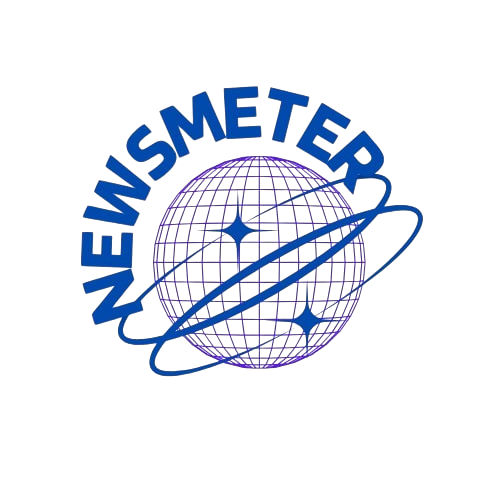In today’s increasingly digital world, random-looking combinations of letters and numbers are often more than just gibberish. A string like “800 Wtlqv Vesdtm Street Rsjhwmt KC 06137“ may appear nonsensical at first glance, but closer examination reveals it might be a placeholder, a coded message, or even a sample address used in specific contexts. This blog explores the possible interpretations, significance, and scenarios in which such a format might appear. Whether it’s used for privacy, encryption, or testing, understanding these kinds of data entries can be surprisingly informative.
Possible Interpretation as a Placeholder Address
One of the most straightforward explanations is that “800 Wtlqv Vesdtm Street Rsjhwmt KC 06137” is a placeholder address—a fictional string used for demonstration, testing, or anonymization purposes. Web developers, UX designers, and database testers often use random address-like formats when building forms or simulating user data. These fabricated addresses help ensure the system behaves correctly without compromising real personal information. In this context:
- 800 could stand for a street number.
- Wtlqv Vesdtm might mimic a street name.
- Rsjhwmt could be a fictional city.
- KC might represent a random or obscured state abbreviation.
- 06137 resembles a ZIP code format.
Using such nonsensical data helps avoid accidental leaks of real data, especially during development phases.
Address Obfuscation and Privacy
Another plausible explanation is that this string represents an intentionally obfuscated address. Privacy advocates and online security experts often recommend masking real addresses in public posts or datasets. For instance, someone sharing a case study, customer record, or housing data might use randomized address components to prevent identification while maintaining the format for clarity.
Obfuscation serves multiple roles:
- Protecting personal privacy.
- Maintaining the structural integrity of datasets.
- Providing a realistic look to mock data for reports, demos, or presentations.
By preserving the standard address structure—street number, street name, city, state, and ZIP code—while scrambling the actual characters, the address remains believable to the human eye but remains entirely fictional.
Could It Be Encrypted or Encoded Data?
Some might speculate that “Wtlqv Vesdtm” and “Rsjhwmt” are the results of simple encryption techniques like Caesar ciphers or substitution ciphers. For instance, shifting each letter by a set number in the alphabet may reveal readable words, suggesting that the address might be a veiled reference to something else.
While this is a stretch without further context, it’s not impossible in cybersecurity or mystery game circles. These types of strings can be:
- Hidden clues in alternate reality games (ARGs).
- Coded addresses for geocaching events.
- Educational tools in cryptography training.
Whether real or gamified, such encoded addresses are usually embedded with meaning meant to be unlocked by a specific group or individual.
Fictional Geography in Creative Media
Writers, filmmakers, and game designers often invent entirely fictional geographies for their stories. It’s possible that this address is used in a fictional setting—perhaps in a novel, screenplay, or roleplaying game—where characters need to visit “800 Wtlqv Vesdtm Street” in the city of “Rsjhwmt,” state code “KC,” ZIP 06137.
This method keeps the story immersive without risking lawsuits or confusion tied to real-world locations. Fictional addresses provide a creative tool that balances realism with legal and narrative freedom.
What Does “KC 06137” Refer To?
Let’s examine the tail end of the address. “KC” may look like a state abbreviation, but it doesn’t match any standard US state code. While Kansas City (commonly abbreviated KC) comes to mind, it exists in both Kansas (KS) and Missouri (MO). Therefore, KC here may be part of the fictionalization or an informal reference.
As for 06137, this is a valid format for a U.S. ZIP code. A quick lookup reveals that 06137 is not officially assigned to any location by USPS but falls within the range used in Connecticut (CT)—specifically in the Hartford area. That doesn’t make it definitive, but it adds a layer of realism to the otherwise fictional address.
This tactic—using an unused but plausible ZIP code—adds authenticity to the data without referencing an actual, functioning location.
Address Formatting in Software Testing
In software development, particularly in quality assurance and UX testing, address fields are rigorously tested to ensure they accept correct formats, restrict invalid inputs, and validate real-time entries. Developers often use fake addresses that match real-world structure but are otherwise meaningless.
In test environments, you’ll find formats like:
123 Fakename Road, Faketown, XX 99999456 Lorem Ipsum St, Ipsumville, ZZ 12345- And yes, potentially
800 Wtlqv Vesdtm Street Rsjhwmt KC 06137
These help with:
- Form validation testing.
- Backend database mapping.
- Simulating real-world scenarios for app behavior.
This approach ensures systems function well before being exposed to real users and real data.
AI-Generated or Scrambled Content
Another increasingly common explanation for such phrases is the involvement of AI-generated or scrambled content. When content is randomly generated—either by AI models, text obfuscators, or captcha systems—address-like strings often emerge. These are not meant to carry meaning but mimic the structure of real data for training or testing purposes.
For example:
- An AI system might output
800 Wtlqv Vesdtm Street Rsjhwmt KC 06137as part of a sample dataset for a smart address parser. - Chatbots or form fillers trained on vast datasets can produce address-looking gibberish during interactions.
- These tools are often used in e-commerce simulations, logistics software, and smart assistants.
In such contexts, understanding the pattern, rather than the content, becomes the key.
Could It Be Spam or Scam Bait?
Less positively, unusual addresses like this can be associated with spam, scam, or phishing tactics. Fake addresses are used in emails, website forms, or pop-ups to mislead users or bypass spam filters.
Such addresses may:
- Be embedded in fake shipping forms.
- Appear in phishing emails mimicking legitimate communications.
- Be listed on scam job postings or product returns.
This makes it important for users to be cautious and critically evaluate such strings when they appear in unfamiliar contexts.
Why It’s Useful to Decode These Strings
At a glance, “800 Wtlqv Vesdtm Street Rsjhwmt KC 06137” might seem like gibberish, but looking deeper uncovers its probable roles in web development, data privacy, software testing, fictional world-building, or even coded communication.
Recognizing the patterns and purposes behind such formats helps readers:
- Avoid falling for scams.
- Appreciate the nuance of secure data handling.
- Build better testing and simulation environments.
- Understand how fiction and function intersect in modern media and technology.
So, next time you come across a bizarre address, don’t dismiss it outright. It might just be the key to understanding a system, protecting privacy, or even unlocking a mystery.
Behind the Numbers: What “06137” Represents
Let’s explore the ZIP code in 800 Wtlqv Vesdtm Street Rsjhwmt KC 06137. While the preceding components are clearly fictional, “06137” is an actual ZIP code in the Hartford County area of Connecticut, particularly in Bloomfield, CT. The inclusion of a real ZIP code in a fictional address can serve several technical purposes:
- It allows systems to test address verification processes with ZIP codes that exist, ensuring that software doesn’t reject plausible entries outright.
- Developers might pair real ZIPs with fake cities or states (like “Rsjhwmt, KC”) to check how systems handle mismatched geographic data.
- In educational or demo content, the use of a valid ZIP provides an added layer of realism without the need to associate it with actual streets or people.
This blending of the real and the fabricated makes the data versatile—it behaves like a real address under system scrutiny while ensuring no genuine location is targeted.
The Use of “KC” as a State Abbreviation
The term “KC” is not a valid US state abbreviation—there is no U.S. state officially abbreviated as ‘KC’. This is likely intentional and serves several useful purposes in mock address formatting:
- It ensures that no real state is implicated in system or software tests.
- It may act as a placeholder or coded reference used by internal teams (e.g., KC = “Knowledge Check” or “Kiosk Client” in test environments).
- In user simulations, it may be used to check how systems validate or flag incorrect or unknown state entries.
The choice of invalid state codes like KC (instead of MO or KS for Kansas City) ensures that users or testers never mistakenly associate data with an existing jurisdiction.
The Bigger Picture: Address Simulations in AI and ML Training
As artificial intelligence and machine learning continue to evolve, synthetic data—including fictional addresses—is playing a major role in training systems. Here’s why:
- Privacy-first data simulation: AI models must learn from realistic datasets, but using actual user data introduces major privacy and ethical concerns. Fictional addresses like this allow for scalable training without risk.
- Improving NLP accuracy: Natural Language Processing (NLP) engines often need to distinguish between names, places, and gibberish. A string like “Wtlqv Vesdtm Street” helps in fine-tuning algorithms to differentiate between real words and structured nonsense.
- Autocorrect and data-cleaning models: These systems rely on large sets of input data, and fictional yet structured entries help ensure they don’t overcorrect valid but unusual names (like foreign or indigenous street names).
Ultimately, the aim is to produce robust systems that can handle both the expected and the anomalous. Fictional addresses help with that.
When Fictional Addresses Go Public?
Every now and then, addresses like 800 Wtlqv Vesdtm Street Rsjhwmt KC 06137 appear in the public domain—on websites, in forums, or even embedded in documents. This typically happens because:
- A test or placeholder was not removed before publishing.
- A training document was shared outside of its intended environment.
- Someone used a generator or template and forgot to replace the content.
While harmless in most cases, it’s a good reminder for developers, writers, and marketers to audit public-facing documents for leftover mock data, especially if they want to maintain professionalism and clarity.
How to Create Safe Fictional Addresses?
If you’re creating fictional addresses for your own work—whether it’s for a novel, a game, a tech demo, or instructional materials—here are some tips:
- Follow a believable format: Use number + street + city + state + ZIP.
- Avoid real addresses: Run a quick online search to ensure your fictional address doesn’t belong to a real business or residence.
- Use invalid or neutral codes: Pick made-up cities or states and mix them with test ZIP codes (like 99999) or out-of-use codes.
- Consider international address formats if your audience is global.
Tools like the USPS Test Address Guidelines or fake address generators can help you build safe, structured mock locations that pass technical muster but pose no ethical risks.
Conclusion: Decoding the Value of Structured Fiction
In the age of data-driven decisions, addresses like 800 Wtlqv Vesdtm Street Rsjhwmt KC 06137 aren’t just nonsense—they are the foundation of test data, simulations, and secure design practices. Behind their cryptic appearance lies a world of purpose: they train machines, safeguard privacy, enhance realism in fictional worlds, and prepare digital systems for edge-case handling.
Whether you’re a developer, writer, educator, or analyst, understanding the intent behind fictional constructs like these is essential. They reflect not a lack of care, but a high degree of intention—a commitment to responsible development, data ethics, and smart design.
So the next time this odd string pops up in your workflow, recognize it for what it is: an unsung hero of the digital age, doing its job quietly, reliably, and without ever needing to exist in the real world.
For more, continue to read at newsmetre.com














